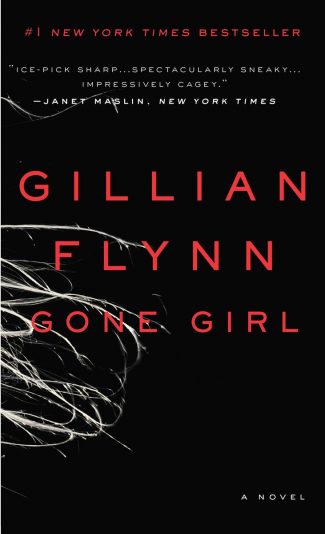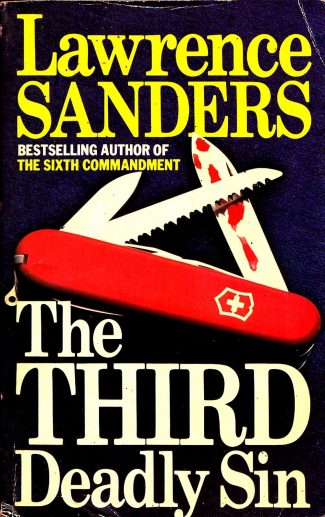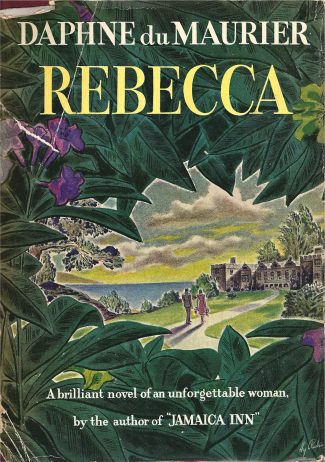Five Thrillers That Inspired Virtual Sabotage
By July Hyzy
October 24, 2018From Kinsey Millhone to Amazing Amy, there's something to learn from each of these masterful thrillers!

Narrowing down to five the thrillers that served as catalysts for me to write Virtual Sabotage was difficult. I’ve read hundreds of thrillers and each one has inspired in its own way. But these five, in no particular order, have all taught me valuable lessons. The following authors demonstrate a level of talent that I hope someday to emulate. And they make for a pretty good TBR list, too…

Killer Instinct – Joseph Finder
Killer Instinct is the first thriller I remember reading that featured an average guy as its central character. Unlike most protagonists in high-stakes adventures, Jason Steadman doesn’t seem to possess any qualities that would help him defeat Kurt Semko, a truly terrifying villain. In all the Finder books I’ve read, I find the author does a masterful job of creating characters that shouldn’t be able to hold their own against a powerful foe, yet manage to prevail, against overwhelming odds. Ordinary protagonists who must rise to overcome extraordinary challenges are not only among my favorite characters to read, they’re exactly the kinds of heroes I want to write.

Gone Girl – Gillian Flynn
Love it or hate it (and passions run high on both sides), Gillian Flynn’s thriller gripped me from the very first line. As I whipped through the book I found myself marveling aloud. “This book is incredible. I absolutely love this book!” And then I got to the end. And hated it. Many months later, now that I’ve had some time to digest the story and ponder my visceral response to it, I’m back to loving the book. The end, as infuriating as it is, is exactly right.
What Gillian Flynn taught me in this engrossing novel is that a reader doesn’t always have to like a character to be emotionally invested in that character’s life. Despicable people can still be fascinating to follow. Seeing how successfully Flynn grabbed readers’ interest and held on tight despite the plethora of rotten humans populating Gone Girl gives me added courage to take chances with my characters.
Rebecca – Daphne du Maurier
The first time I read Rebecca, I was very young. What drew me in back then was the nameless narrator’s plight as a paid companion. How odd that seemed to me. How awkward. And (did I mention I was young?) although I made it through the entire book, those early scenes with Mrs. Van Hopper were the ones that stuck. The story held my interest well enough but I quickly forgot many details. The second time I read Rebecca, it was as though a whole world opened up for me. I was still relatively young—high school, maybe?—but this time, the story haunted me in all the right ways. The moment I reached the end, I turned the book over and started reading again.
Page to Screen: Rebecca — Du Maurier vs Hitchcock!
Daphne du Maurier’s writing cast a spell over me. That’s the best description I can come up with for my deep love of Rebecca. My fondest hope is to someday achieve that level of power over readers as well.

T is for Trespass – Sue Grafton
I’ve been a Sue Grafton fan for many years, gobbling up her alphabet mysteries as fast as I could get hold of them. Grafton’s series functioned as a writing-how-to class for me when it came to voice and detail. As first-person narrator Kinsey Millhone tracks down guilty parties, she delivers incisive, sassy, and vivid details in every scene. It’s a beautiful thing. We not only see the world Kinsey inhabits, but we also get her raw, unfiltered impressions of people, places, and events.
Of Grafton’s many excellent novels, T is for Trespass is an absolute stunner. The reason it lands on my list of favorite thrillers is that Grafton ramped up the tension (to near-intolerable levels) by sprinkling in third-person chapters written from the villain’s perspective. We get to know Solana. This story is so real, so terrifying, and so plausible that I found myself holding my breath as I whipped through reading its final chapters. To me, Sue Grafton is a master.

The Third Deadly Sin – Lawrence Sanders
I read this book a very long time ago—in college maybe, or shortly thereafter? Not positive. Lawrence Sanders was recommended to me by my then-boss. I zipped through the first two books in the series and had no doubt that I’d enjoy The Third Deadly Sin too.
By the time I got to the third in the series, I’d come to know Edward X. Delaney so well that I’d begun craving giant sandwiches and ginger ale. (Still do, although I generally don’t consume them over the sink.) I’d also come to believe I knew what to expect from one of his books: excellent writing, solid characters, great suspense. This one, however, blew me away. In it, Sanders has Delaney come to the realization that maybe—just maybe—this time the killer isn’t male. Whoa! A female serial killer?
Back when I read it, and even further back when it was written, casting a female in this sort of villainous role was not all that common. Sanders, through Third, taught me to think differently: to not allow gender stereotypes to limit my characters; to understand how villains can be sympathetic characters, too; and most important, to be aware (and to allow protagonists to become aware) of one’s own bias.
I wonder how well this book has held up over time. Somehow, I imagine it’s still great.

